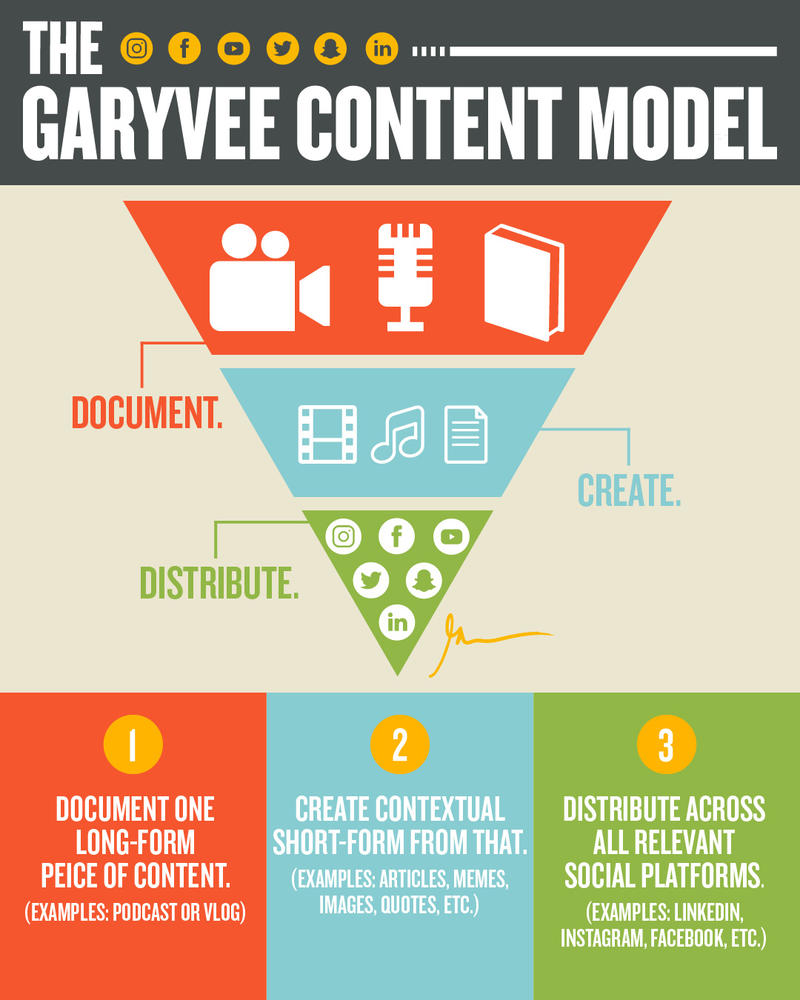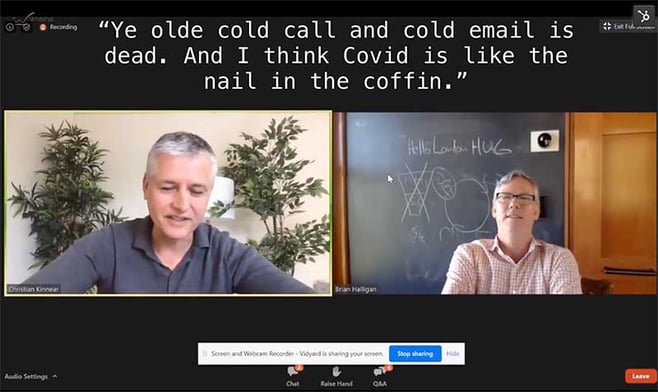How to maximise your content authority with Multi-Channel Distribution
- Home
- How to maximise your content authority with Multi-Channel Distribution
A Content Distribution Strategy will make the most of your content and social media channels
Content is the fuel that drives the vehicle of online marketing. The more high-quality content you put out, the faster you’ll be speeding down that road.
But not everyone has the time or resources to create brand new content all the time. Therefore if you want to build an audience it’s wise to make the most of the content you do produce – work smarter, not harder.
That’s where authority content and multi-channel distribution can help. It’s not an especially new or radical idea to release your content in various formats and platforms to reach the most possible viewers. But tailoring content in the right way, at the right time and for the right audience can make the difference between a short-term spike and a viral explosion.

To illustrate a good content distribution strategy we’re going to take as a model Gary Vaynerchuk’s groundbreaking 2018 slide deck. In this presentation he demonstrates how he transformed a single piece of content through a distribution network, reaching a whopping 35 million views.
Gary V’s Content Pyramid

Image Source https://www.linkedin.com/feed/update/urn:li:activity:6530068394887114752/
The essence of Gary V’s process boils down to having one bit of authoritative, useful content, then splitting it up into many different ‘microcontent’ slices and widely distributing them.
His model of content strategy takes the form of an inverted pyramid, as follows from top to bottom:
- Long-form piece of content
- Contextual short-form micro-content pieces
- Distribute micro-content on social platforms
The top of the pyramid starts with the largest single element – a long item of ‘pillar content’ such as a video, podcast, vlog, Q&A session, etc. This could be written content like a book or a magazine, but it’s better if it’s audio-visual.
Narrowing down, the middle section of the pyramid is about repurposing your pillar content into smaller, short-form snippets of ‘microcontent’. Examples include articles, GIFs, short videos edited from the long video, soundbites, quotes, stills, etc.
The last, smallest segment of the model is distribution on social media. This part aims to spread your micro-content as far as you can. Once these seeds have reached viewers and are embedded, they’ll then grow into an interested audience who come back to watch the full piece of pillar content.
Those are the three main steps of Gary V’s system, and it certainly worked for him.
Rich Ux of Rich+Niche gives a rough back-of-napkin estimate that the content strategy Gary talks about in his slide deck was worth around $75,000 in paid ads. Remarkably, Gary and his team of great marketers turned one piece of content into 33 separate items. Just think how much time and cost would it take you to make 30+ pieces of brand-new content.
Now we've seen the potential of a multi-channel strategy, let’s see what it’s like to put this Document > Create > Distribute process into practice.
Step 1. DOCUMENT: use your expertise to make a brilliant piece of authoritative content
To demonstrate this process with our example, let’s use Whitehat’s recent fireside chat video with HubSpot CEO, Brian Halligan (if you haven’t seen it yet - watch it here).

The London HubSpot User Group (HUG) invited Brian to speak with the HubSpot head of EMEA, Christian Kinnear, about the impact of COVID-19 on businesses and what they can do to survive the crisis. Their discussion turned into an excellent piece of engaging content from two highly respected authorities in the field of inbound marketing.
This pillar content features interesting current statistics, lessons learned from their many collective years of marketing experience, and their learned opinions on where things will go from here. In short, it’s a must-watch video for anyone interested in online marketing in these unprecedented times.
It’s also a great way to show the impressive knowledge and expertise of the leaders of HubSpot, as well as Whitehat and the London HUG in general.
This is important. For all the work of the next two stages to be worthwhile, the original piece of long-form content needs to be exceptional. After all, the point of repurposing and distributing off-shoot content from it is to draw a wider audience to watch the pillar piece and connect with your brand. Quality content is also more likely to be rich in quotable material to split into useful chunks.
Know your stuff.
If you can teach someone else something then you can probably call yourself an authority on the subject. David Jenyns, talking to Troy Dean on his Agency Mavericks podcast in Australia describes how writing his book on Authority Marketing was a way to prove to potential customers that he knew what his was talking about – and could help them with their needs.
Rich Ux recommends coming up with a strong offer – a narrow focus in a specific niche that brings value and shows that you care about the people you’re talking to.
This is worth remembering. If you have a business you’re passionate about it’s likely you have something interesting and worthwhile to say about your industry and your product or service.
Your own knowledge, experience and passion are often your biggest assets.
Use them to document what you know and provide an enriching, usable resource for your target audience.
In our instance, Brian Halligan’s 14 years as co-founder and CEO of an organisation with 78,000 customers gives him incredible insight into his industry and real credibility for people to find out what he thinks and recommends.
The virtual HUG chat was recorded was Zoom, and then posted on Whitehat’s website for people who weren’t able to tune in live to see it. However, to increase its reach, potential viewers need to be attracted...
Step 2. CREATE: turn your pillar piece into several smaller chunks of Micro Content
How often have you sat in the cinema or been scrolling through social media, seen a movie trailer and thought, “That looks good, I think I’ll go and see that”?
A good trailer is an alluring short edit of the best bits of the movie (hopefully without spoiling the plot), enticing you back to the movie theatre to watch the full thing.
That’s what the second stage of Gary’s content distribution strategy is all about. Make powerful little snippets from the main content, comprised of the ‘best moments’ most likely to appeal to your target audience.
With Whitehat’s distribution channels in mind (we’ll come to those in a moment) we want to repackage key the moments, phrases and quotes from Brian and Christian’s discussion into pithy, trailer-like images and videos.
As with the long-form document we need to make these micro content nuggets visually appealing. Social media platforms are optimised for visual and audio material, and even textual quotes should be made into GIFs or paired with an image.
Below is an example – a screenshot of Brian and Christian talking in the video with a quote from Brian at the top. Now, obviously, this isn’t the world’s greatest image but it took me three minutes to put it together. Using content from the video to produce an image to post to social media is not hard at all.

To make it more impactful perhaps we’d choose a clearer photo of Brian, or even a short video edit of him saying the words. And sure, we could throw on a big HubSpot logo and make the text graphics a little more exciting.
But you get the idea: without much more input we have a visually appealing quote about marketing and COVID-19 ready to grab the attention of Whitehat’s social media followers.
In the time it would take you to come up with just the title of an entirely new blog post you can create a piece of content that will be new to most of your followers.
We know that many of our readers probably know Brian’s face from other videos, and they’re likely feeling the effects of Coronavirus. So we have a ‘Covid’ keyword in an eye-catching quote about cold calling and emailing. These elements combined will make our target viewers want to click on a link to watch the full HUG video.
This is just one form of smaller content we can squeeze out of the main video. Gary recommends a range of others including:
- writing an article or blog post based on the video transcript
- stories for Instagram
- GIFs
- memes
- remixes and mashups
- videos of varying lengths
Each element should be created according to the specifications of the social media platform it’s to be released on.
With our audiences in mind, we can prepare several different pieces of small content, ready to send out on multiple channels and maximise the reach of our pillar content.
Step 3. DISTRIBUTE: put the micro-content out on all your social media platforms
Content Format
Each piece of content we made from the main video will have been tailored to the specifications of each social platform it was intended for. This means we’d adjust the format of our posts as follows:
- Size of image - e.g. square for Instagram,
- Length of video - e.g. 15 seconds for Snapchat,
- Word count - e.g. max.240 words for Twitter,
- The tone of voice and style - e.g. chatty/humorous on Facebook, business-like on LinkedIn.
All of these posts would have links back to the main video where possible, and we should encourage people to share the posts with their followers and colleagues in the marketing field if they find Brian’s thoughts in the video helpful.
David Jenyns believes this is a crucial part of the distribution and content creation process – getting people on board early to take an interest in your content before you’ve finished making it. Having people invested in the outcome by asking questions beforehand, or looking at drafts before it’s published will ensure that this close group will help spread the word once it’s up.
In our example, we invited members of the London HUG to join the fireside chat live. Those who tuned in and enjoyed it are then likely to share our posts promoting it later. Other members who were invited but couldn’t make it at the time will probably watch the video now.
They are part of our HubSpot user group (the biggest in the world) so we have an audience primed and ready to support our multi-channel distribution efforts.
Release Schedule

From the above slide, you can see that Gary recommends posting all micro content immediately after the pillar content. The aim of this is to maximise the impact, like laying a fresh layer of snow on the mountainside just as the snowball starts rolling.
Naturally, we’ll know from our audience analytics what the best days and times to post content are for our readership.
So, say we post our fireside chat video at 10 am and then immediately push our micro content via Facebook, Twitter, Instagram, LinkedIn, etc. at 10.01, the numbers will hopefully jump up quickly as our followers click on our links. This ideally will cause a viral growth effect where more and more people share and engage with our video as it quickly gains popularity and views.
Step 4. LISTEN: what are your followers saying about your content?
This step may be too much work for some smaller businesses or marketing teams, but if you can, look out for feedback so you can adjust your offerings to meet viewers' needs.
It’s always worth engaging with Facebook or Instagram comments, tweets or reviews. Not only does this make your audience feel they are building a human relationship, but as the ones consuming your content, they’re the people best placed to tell you what you should be providing.
Gary even suggests asking viewers to comment with video timecodes highlighting their favourite parts of the pillar content.
Step 5. REPEAT: put your users’ comments into more micro-content
Knowing what parts of our video resonated most with our followers, we can create more videos and images, highlighting these ‘best bits’ to a wider audience. It’s even possible to include positive comments as quotes – word of mouth goes a long way in growing your authority.
Re-distribute these new pieces through selected social channels. For example, if we found from listening to our community that Instagram was a powerful forum for driving viewers to our main video, it would make sense to post featured user comments to our Instagram story.
In this way, the cycle can go on, recycling and reposting, engaging with our followers and increasing views of the main content.
Conclusion
Gary Vaynerchuk has expertise when it comes to marketing his content, and his multi-channel distribution method has worked extremely well for him.
This method’s success depends on your existing social media following and visibility, the size of your audience, and the strength of your original content. But if you have a strategy that utilises as many channels as possible, your quality content will find an audience ready to listen.
As Brian Halligan says, educating your potential customers works. That’s the essence of inbound and content marketing. Use your knowledge to educate your audience with great content and they’ll come to you.


